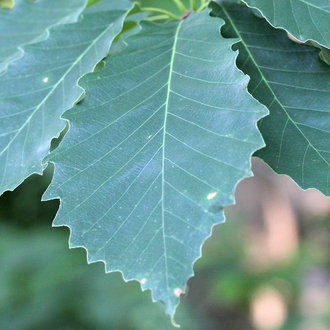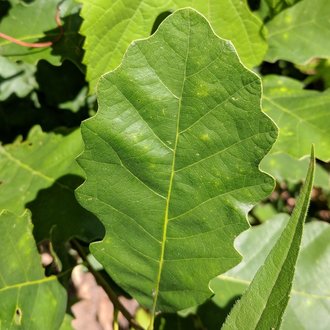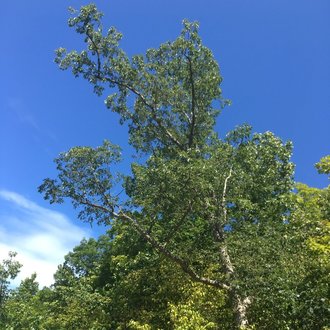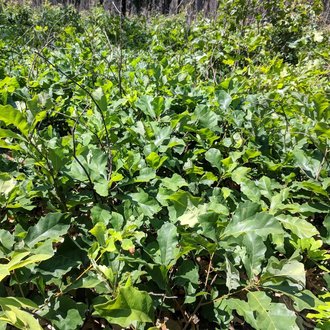Chinquapin Oak vs Dwarf Chinquapin Oak
This guide is under construction and has not been published yet. It may have errors. When in doubt, double-check other sources for definitive ID.These two species can sometimes be confused, as both can occur on harsh, barren sites, and both have similar-shaped leaves with gland-tipped teeth. They are usually easily distinguished by differences in growth habit and leaves. Among harsh sites, Chinquapin oak is usually limited to limestone outcroppings and other sites with alkaline soils, whereas Dwarf Chinquapin oak can also occur on acidic soils.
Chinquapin Oak (Quercus muehlenbergii) | Dwarf Chinquapin Oak (Quercus prinoides) |
A white oak native to North America, preferring soils high in calcium. | A scrubby white oak, found on barren sites with dry, acidic soils. |
Leaves have far more lobes and side-veins: 10-14 (rarely 9 or 15-16) per side. Photo © Peter Chen 2.0, CC BY 4.0. | Leaves have far fewer lobes and side-veins: 5-8 (rarely 9) per side. Photo © Nate Martineau, CC BY 4.0. |
Grows as a large tree, to 30 m tall. Photo © Charlie Hohn, CC BY 4.0. | Grows as a thicket-forming shrub, rarely more than 3 meters tall, often shorter. Photo © Nate Martineau, CC BY 4.0. |
References & External Resources
These short lists show only links helpful for ID. For a complete list of references and resources also covering other aspects of ecology, visit the links section of the full article on each plant, which is the first entry here.






